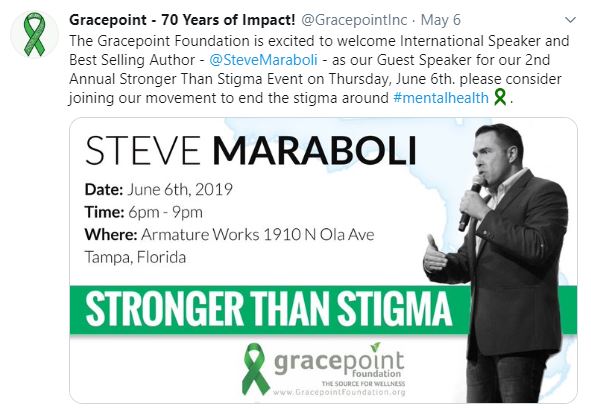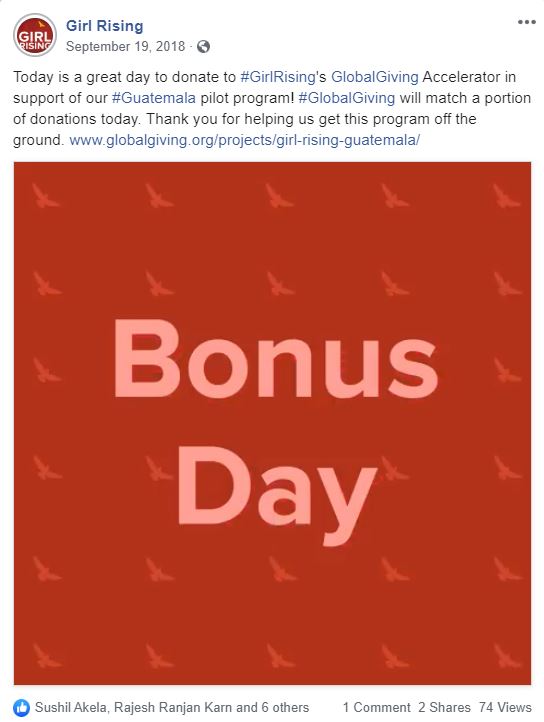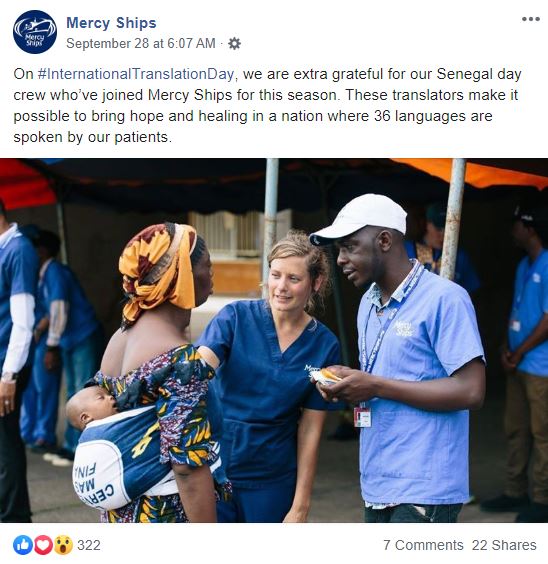Your nonprofit is working toward a number of goals simultaneously. Making donors feel appreciated. Engaging volunteers. Increasing awareness of your organization. Fundraising for your latest campaign. The list goes on and on. Social media can (and should!) be one of the many tools your organization uses to meet its goals.
From Facebook to Instagram, each social media platform has its own unique function that serves your nonprofit differently. Certain social platforms are great for fundraising, while others are ideal for having conversations with your supporters. To use social media to help meet your organization’s goals, it’s important to understand the differences and unique perks of each major social platform. To make achieving your goals with social media easier, we’ve listed three broad nonprofit goals and described how social media best practices help achieve them.
1. Brand awareness
Isn’t brand awareness something only for-profit businesses have to worry about? Wrong! If you want to increase awareness of your nonprofit, its mission, and the need it addresses, you’re already working towards a brand-awareness goal. Your brand is what makes your nonprofit recognizable and unique. Brand awareness indicates how many people on social know you exist and understand what kind of products and services you offer. According to Sprout Social’s Social Index report (a report that surveys over 1,000 social media marketers and 1,000 consumers), the number one reason companies and organizations use social media is to increase brand awareness.
Nearly half of the world’s population is on social media, so if you want to increase awareness of your nonprofit, social media is the place to start. Facebook, X, and Instagram are excellent platforms to use to increase brand awareness because they’re built for visual and engaging content. To increase brand awareness using these platforms, follow these pro tips:
- Post visual content. Videos and images have the highest engagement rates across Facebook, X, and Instagram. Facebook and Instagram’s algorithms prefer posts with higher engagement. The more engagement your post receives, the more likely it is to be seen.
- Know your target audience. Post interesting content that is of value to your current (and future) followers. Share events, special offers, and unique opportunities on social. Your posts shouldn’t always be requests for donations or volunteers.
- Connect with influencers. On Facebook and X especially, being mentioned by someone with a large following can increase your own following and awareness of your organization. If you’re hosting an event with other notable organizations or community members, ask them to tag your organization in their posts about the event. View the tweet by the Gracepoint Foundation below for an example!

2. Fundraising
Principles that guide traditional fundraising can guide fundraising on social media too. For example, continuous asks can result in donor fatigue and support being withdrawn from your organization (on social media this translates to losing followers and/or a decline in engagement). One key way to retain donors is to make them feel appreciated. You mail thank-you cards to your donors, right? Try using social media to express appreciation for your donors, as well!
Don’t neglect the language you use in your asks, either! Fundraising appeals that evoke emotion and tell a story outperform those that don’t—this also goes for asks you make on social media.
There are several aspects of traditional fundraising that don’t work for social media. To fundraise on social media without losing followers we recommend the following:
- Limit your fundraising posts. According the Sprout Social Index report, the main reasons social media users follow an organization is to learn more about them, to be entertained, and to receive news about the organization/brand. Numerous fundraising asks can result in donor fatigue and be received with the same negative connotation as sales content, resulting in unlikes and unfollows.
- Keep it short and sweet. Short posts (80 characters or less) outperform long posts, so keep your fundraising asks and storytelling concise. Take advantage of images and videos to communicate your fundraising progress and needs. If you’re making a direct ask in a post, only include one link in the post (which goes to your online donation form). The post by Girl Rising below is a great example of what a fundraising ask on Facebook should look like. Short, sweet, and to the point with a direct link!

- Know your platforms. Through Facebook fundraisers you can create fundraising pages and even let your supporters create their own mini fundraisers in support of your organization. If you’re not fundraising directly on the platform through Facebook fundraisers, create visual posts that include direct fundraising asks and a link to your donation form. Pro tip for Qgiv users: Your Facebook fundraisers can update your peer-to-peer fundraising campaign thermometers with our Facebook fundraisers integration.
- X’s character count limitation makes the platform better for short fundraising updates. If you include a link to your donation form, use a site like Bitly to shorten your links.
- On Instagram you can only have one link in your bio, and links aren’t clickable in post descriptions. If you’re going to make a post about a fundraising campaign and ask your audience to take action, make sure your bio link goes to your website and that information about your fundraiser (and the ability to donate) is easily accessible.
3. Donor and volunteer engagement
You might spend months planning donor/volunteer appreciation events, and even hours arranging visits with your nonprofit’s biggest supporters. Engaging with individuals who give their time and money to your nonprofit is important, and it can be done on social media in addition to in person. After building brand awareness, increasing community engagement is the next most pursued goal by social media managers. It’s also a goal shared by most nonprofits!
Social media was built for engagement. In fact, platforms like Facebook and Instagram even have algorithms that favor engagement. To make the most of your social media accounts and connect with your supporters, follow a few of our tips for engagement:
- Post regularly. If you want to engage with your supporters, you need to have content for your supporters to engage with. Posting regularly not only presents your nonprofit with daily opportunities to engage with donors and volunteers, it’s standard practice for increasing your following. Try and post daily on Facebook and more than once daily on X. Post at least once per day on Instagram, even if you’re just posting to your story.
- Respond to comments and shares. To encourage your followers to engage with your organization on social media, you need to get into the habit of responding to their comments and shares. A simple “Thanks for sharing!” comment shows your supporters that your organization is active and appreciates their engagement. Mercy Ships posts on their Facebook account daily and always make an effort to “like” every comment on their posts.

- Ask for feedback and opinions. Creating polls or surveys on X and Facebook is an easy way to obtain feedback from followers. Asking for feedback makes your followers feel valued.
Final thoughts
Goal setting for social media can fall in line with existing goals for your nonprofit. To retain donors, thank volunteers, fundraise, increase awareness, and more, social media should be one of your many go-to resources.
For clear examples of great nonprofit social media content, check out our post showcasing three nonprofits that get social media.
Intrigued by Qgiv’s Facebook fundraisers integration and want to learn more? Contact us for more information.




